I shopped around for pre-manufactured Wainscot kits to wrap my walls but they were cheap plastic or thin, cheap pressed wood kits that looked like something I’d be tearing off once I got a good look at it installed.
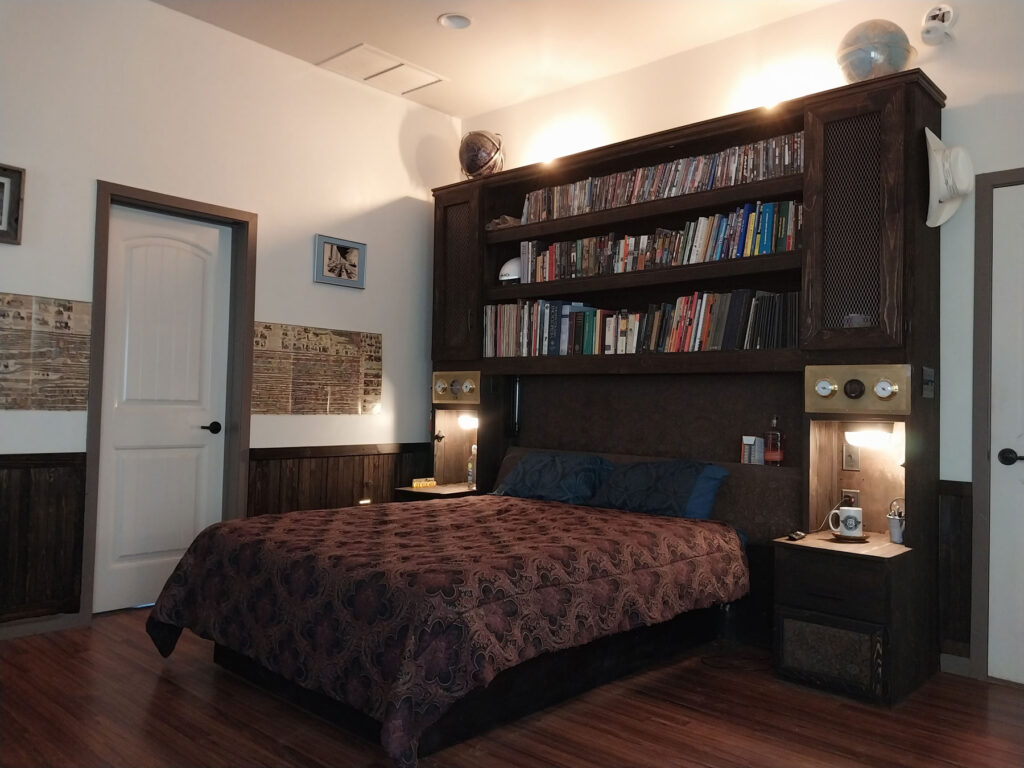
That’s when I decided to do it from scratch, using real wood then I’d stain it to match my bed/wall unit.
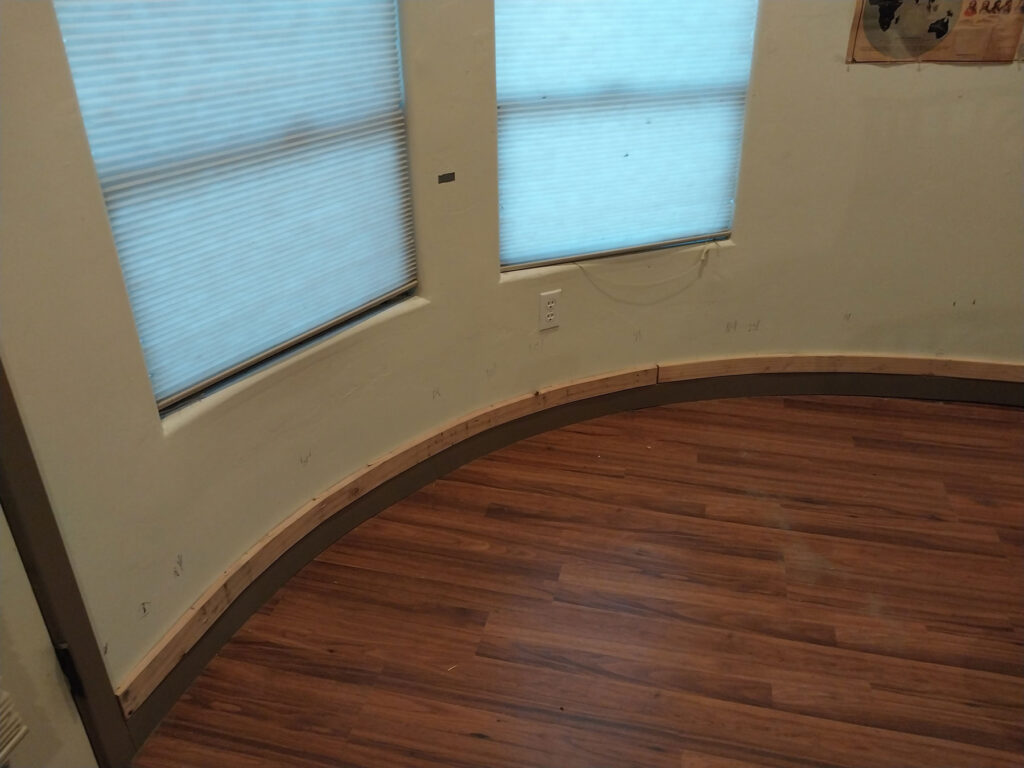
I started off by installing the Wainscot base board. For the curved sections, I had to score the back side of the planks then soak them in hot water in a bath tub, then used a vise to bend the angles between each score to get the radius correct.
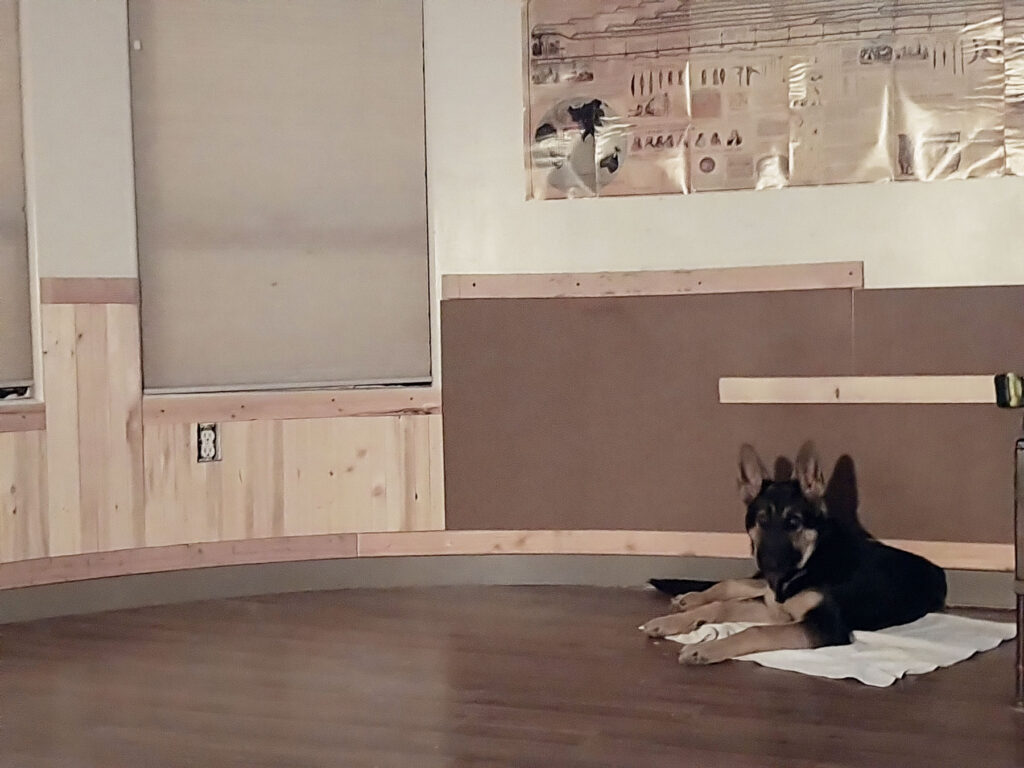
I made a mistake in the beginning, experimenting behind the door where any foul up wouldn’t be the first thing I’d see entering the room. Gluing the slats together on the floor then nailing them to the wall studs was a bad idea. The hammering broke the slats into small sections, so I came up with another, more robust method.
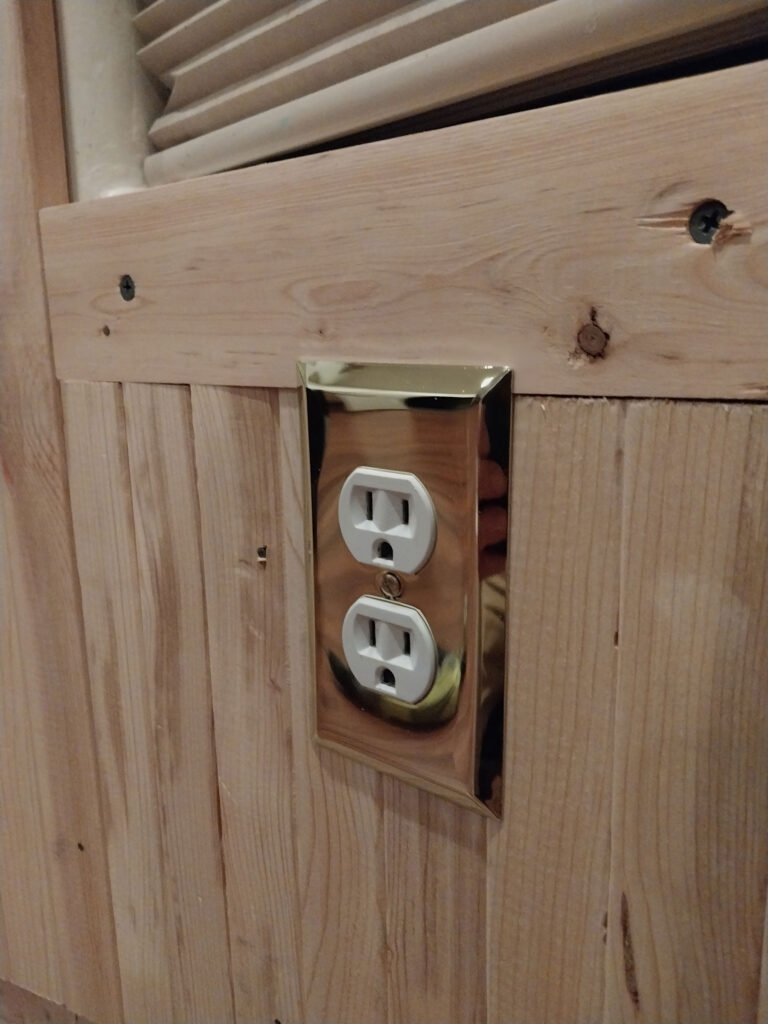
I nailed the 1×2 slats to a sheet of luan plywood, which held them in place as a panel. That arrangement could be nailed onto the wall studs behind the drywall really well, so that was the method I used for the rest of the room.
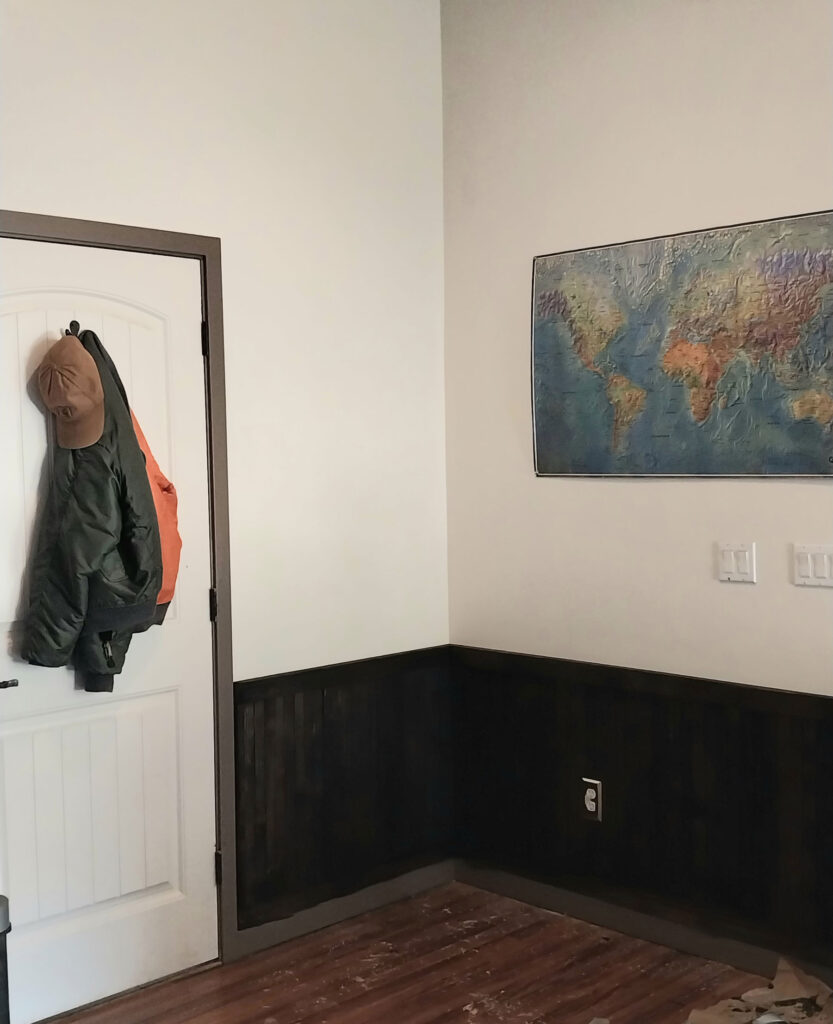
I capped the 1×2 inch slat Wainscot on top by using 2×3 pine for a chair rail. The whole thing is real wood that I stained to match my bed/wall unit, which unifies the room with rustic style.
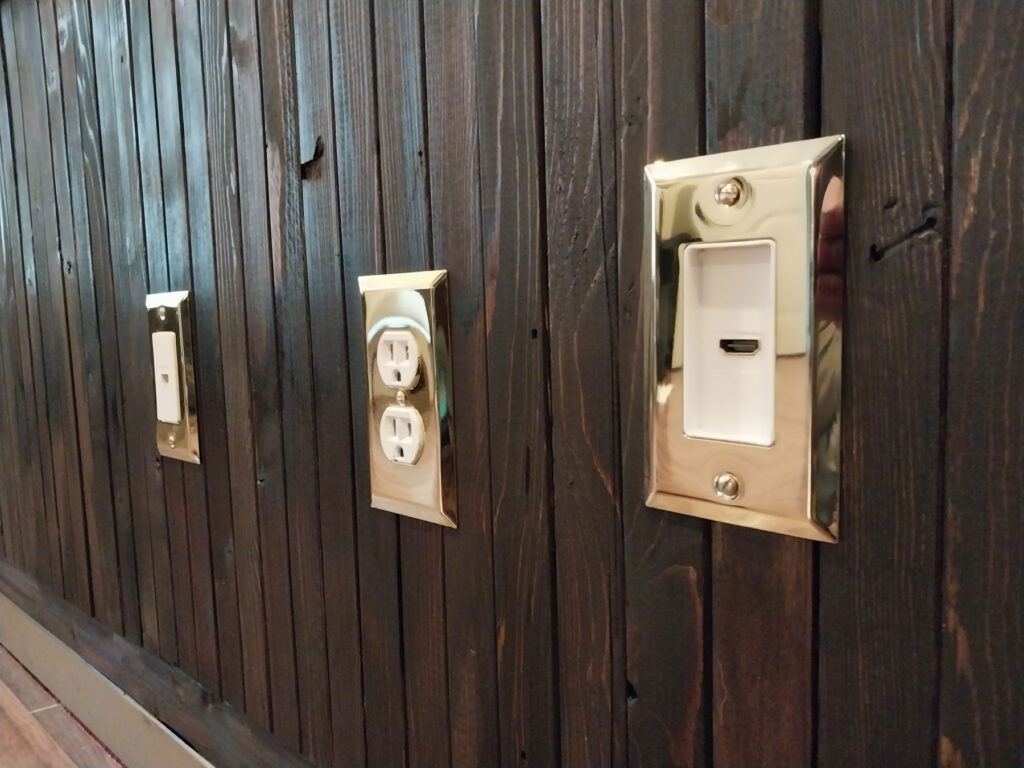
Naturally, brass outlet plates finished off the Wainscot with rustic style that unified well with the modern electric and digital outlets.
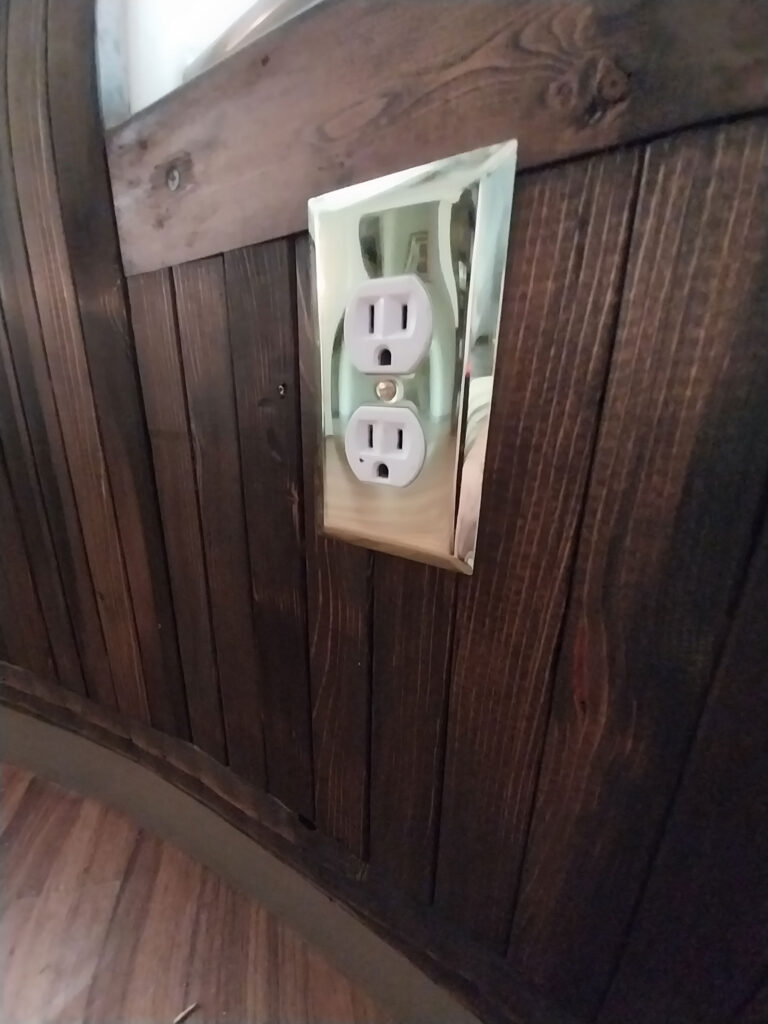
The master bedroom always felt vacant to me, no matter how many pieces of furniture were put in the room. It just had a random feel to the space like someone just moved in and wasn’t done unpacking yet. It really bugged me. Why wasn’t the master bedroom coming together?
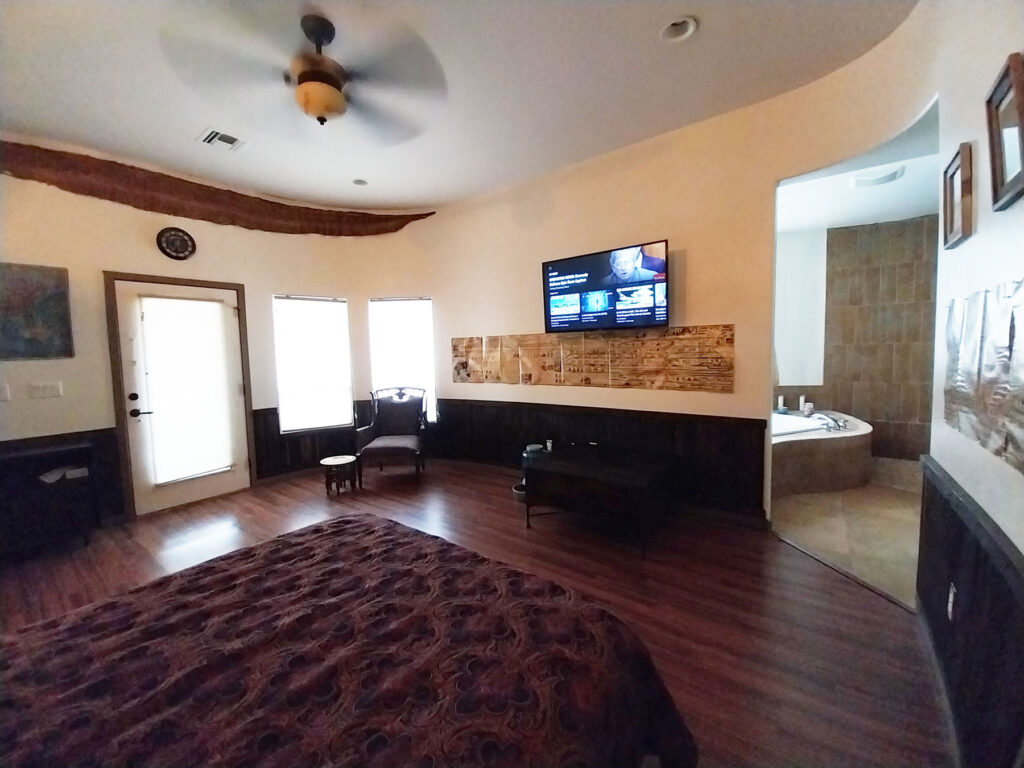
But now, with the Wainscot installed on the walls, the master bedroom completely lost any vacant feel, even with few pieces of furniture in the room to keep the floor space open.

The Wainscot really unified the room. And it’s custom, appropriate for the inside of a custom home.
And the best part is, if a future owner just hates it and wants it removed, it’s modular because the panels are nailed on sparingly to the wall studs. That’s a simple problem, solved with a putty knife, a small container of spackle and a fresh coat of paint on the walls they would be re-painting anyway. It’s real wood but it’s all cosmetic.